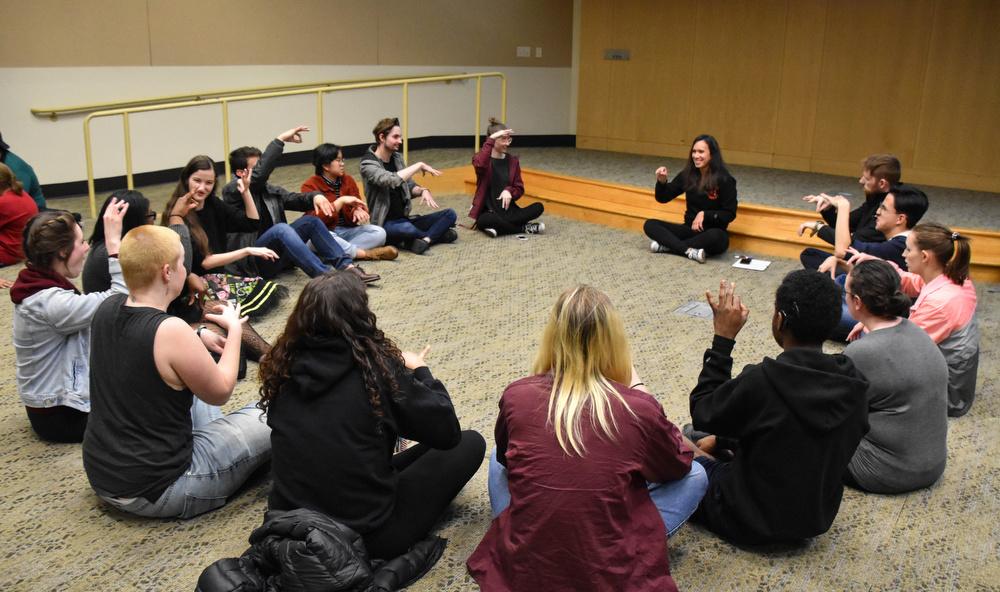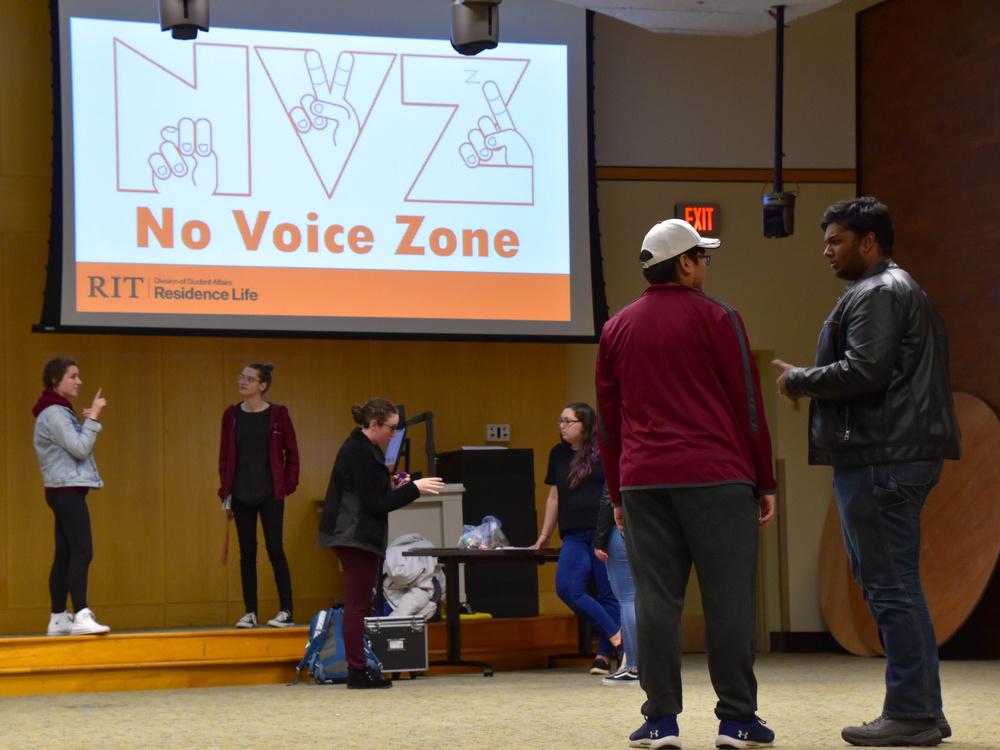College is a time of many new experiences — it’s important to experiment to find what is right for you. At RIT, this comes with a very unique opportunity. According to an National Technical Institute for the Deaf (NTID) study, Rochester is home to the largest per capita population of deaf and hard-of-hearing individuals in the nation, largely thanks to the presence of NTID.
Many students who arrive on campus, however, have little experience with Deaf culture. This can lead to some anxiety and apprehension when it comes to communication. After all, it is much easier to associate with those who communicate in the same language. Yet, the more we isolate ourselves in our own communities, the more easily we lose out on important ideas and viewpoints that we may not have thought of.
The Language Gap
Deirdre Schlehofer, professor at NTID in the Department of Culture and Creative Studies, always encourages greater interaction between the Deaf and hearing communities. She’s noticed a larger number of students are arriving on campus with prior knowledge of American Sign Language (ASL), but admits that there is still a large communication gap to overcome.
In her classes, many of her students have told her they had little to no exposure to Deaf culture or ASL before coming to RIT. But they would take a class with an interpreter or meet a Deaf student on their floor in the residence halls and would strike up an interest in learning more.
“Because of … that initial contact with a new culture and a new language, [it] is enough to open their minds and make them curious … ” Schlehofer said. “Many, many students in my courses over the years have said that.”
A student interested in Deaf culture at RIT doesn’t necessarily need to enroll in a formal course to learn more about ASL. Due to the unique environment of this campus, students often are able to teach themselves ASL through practice with their peers. No Voice Zone, a weekly ASL workshop on campus, is another great resource. We have many opportunities to get involved with the culture, but what exactly is Deaf culture?
“It doesn’t matter that you don’t share a common language.”
Deaf Culture
As language is a key component of culture, communities who use different languages develop different cultures. Such is the case with the Deaf community. However, Deaf culture is not as cut and dry as an outsider may believe.
“We’re not a homogeneous Deaf community,” Schlehofer said.
Just as hearing students come from diverse backgrounds, so do Deaf students. According to Schlehofer, approximately 90 percent of the Deaf students on campus come from hearing families in which they are the only deaf member. Many of these students grew up reading lips or by finding a different method of communication. In fact, many Deaf students come to RIT not knowing any ASL at all. They learn the language right alongside their hearing classmates.
Further, to assume a student’s hearing status is presumptuous. Not all hearing students communicate solely through spoken English; likewise, not all Deaf students communicate solely through ASL. Many hearing students are also fluent in ASL or are in the process of learning, whereas many deaf or hard-of-hearing students may know very little of the language and prefer speech.
Cochlear implants can also be seen on many students, but this does not guarantee their hearing is comparable to that of their hearing peers. You cannot always rely on external indicators, as there’s more to Deaf culture than meets the eye.
Apprehension
Hearing students are often apprehensive and anxious when it comes to interacting with their Deaf peers, and the opposite is likewise often true. As the saying goes, birds of a feather flock together. It’s much easier to relate to those who are most like you.
We all are students at the same university, and to cluster together limits our views to only reflecting on the experiences of those most similar to us. You should not be hesitant to reach out to a hearing classmate, nor a deaf classmate. As a class and as a community, we work together and thrive together.
“Human beings are amazing in their ability to find ways to express themselves … through different means of communication,” Schlehofer said. “You can use gestures, you can write notes on paper or text into your phone. Human beings are born with an innate ability to be creative and communicate. It doesn’t matter that you don’t share a common language.”
While Schlehofer admitted that Deaf individuals are likely more experienced with finding creative ways to communicate, the ability to do so lies within everyone.
Taking the Leap
It’s never a bad idea to reach out and chat with someone from another community, and there are steps students can take to break down communication barriers.
The first and easiest way would be to interact with students who know ASL and pick up on the language one word at a time.
The second, as previously mentioned, is to attend No Voice Zone. This student-run workshop occurs every Wednesday evening in the Student Development Center, underneath Dining Commons. Most clubs and organizations across campus are inclusive of both hearing and deaf members — including those within NTID.
The next would be to take an ASL class. They’re some of the most popular language classes offered at RIT and extremely accommodating of beginners. Many students take an ASL class and fall in love, declaring an immersion in the language, if not a minor or a full ASL and Interpreting Education major.
NTID also offers a number of events that can further one’s understanding of the language and culture, and provides opportunities to connect with students — both deaf and hearing — on a more casual note.
“We’re not a homogeneous Deaf community.”
Regardless, it is important to make those connections in any way possible. On one hand, it can make you a more well-rounded person. On the other hand, it provides you with the chance to get to know someone you may not have interacted with before.
As Schlehofer said, “If a student comes to it with a natural curiosity and they are willing to learn … then there’s really plenty of opportunity to learn sign language.”








